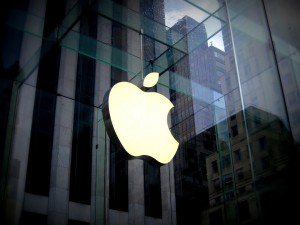Testing Loyalties: When Brands Take a Stand
The concept of corporate social responsibility is something that has become a common and current topic of discussion in today’s shifting business and media landscapes.
While brands and companies need to consider their relationships with customers before acting, they also have to stand on some set of internal principles. Within that realm lies an interesting, provocative question: Do companies and the public relations professionals within them have a responsibility to stand up for what they believe in, even when it may conflict with what their audience believes?
As Melissa Dodd’s article in Forbes noted, these collisions and the companies’ reaction to them can prove either harmful or helpful to its relationships with customers. It’s in times of such conflict that potential public relations case studies come to light and put the concepts of crisis management, audience engagement and strategic communication to the test.

Defending Your Reaction: Uber and Kalamazoo
On Feb. 20, 2016, the popular car service Uber found itself smack-dab in the middle of both tragedy and controversy when one of its drivers, Jason Brian Dalton, allegedly killed six people during a shooting spree in Kalamazoo, Michigan. Following the events of that day, Uber responded on social media with a short, succinct statement from its chief security officer before essentially deserting its Twitter account for the next three days, save for a reply to a customer complaint.
Going dark is a risk for any brand, but Uber’s reaction sparked controversy across both the Internet and news media. Discussions began on whether its response caused a “public relations nightmare” or was truly the best thing it could do, while its tactics raised questions in general about how brands should react to crises. Regardless, Uber’s response to the shootings proves to be an intriguing look into the crossover between a brand’s identity to consumers and its own internal conduct.
Uber has come under scrutiny for its driver-vetting process before and has defended its process in the Dalton case, saying that he cleared its background checks and had received positive reviews. After Kalamazoo, however, Uber is under an even more intense level of pressure to react accordingly to not only shift the public’s perception of the company back in a positive direction, but also change a key part of its operations to ensure current, former and prospective customers that its services are safe.

Standing Firm: Apple and San Bernardino
In another sector of the public relations field, Apple was in the midst of what The Blaze called a “public relations battle” with the federal government over the government’s request for Apple’s help in accessing the iPhone of Syed Rizwan Farook, one of the perpetrators of the Dec. 2, 2015, shooting in San Bernardino, California, that killed 14 people.
While the two parties have recently resolved their debate over whether the government’s request poses a security risk to Apple’s customers, Apple’s response in particular has caused a whirlwind of social and political controversy. Some have come out in support of Apple’s stance, while others claim that the software giant’s course of action is sending the company into what the Chicago Tribune called a “public relations disaster.”
Regardless of one’s stance on the issue, the public relations issue at the forefront of the Apple case pits a company’s internal ideology versus external factors. The case essentially showcases a conflict between a company’s core values and those of its leadership against external factors such as government influence and public perception. Regardless of one’s opinion, the public relations issue in the Apple case is that of company and personal ideology versus the impact of external factors, in this case government influence and public perception, among others. Like the Uber case, Apple’s reaction to the government’s request has created a firestorm of legal, ethical and public implications with regards to the company’s responsibilities not just to its audience, but to its own codes of conduct.
Both of these cases illustrate what can happen when a company’s guidelines and ethics conflict with its responsibilities to the audiences it serves. In the end, both may become future case studies for public relations professionals everywhere when it comes to handling these conflicts, but whether the outcomes will be positive or negative remains to be seen.
—
Drew Pendleton is a junior at The University of Alabama majoring in public relations and Spanish. He is currently a student writer and editor for Platform Online Magazine, the freelance editor for Mosaic Magazine, and a media relations strategist for Capstone Agency, the university’s student-run firm. Connect with him on Twitter @drew_pendleton, LinkedIn or by email at ampendleton1@crimson.ua.edu.
